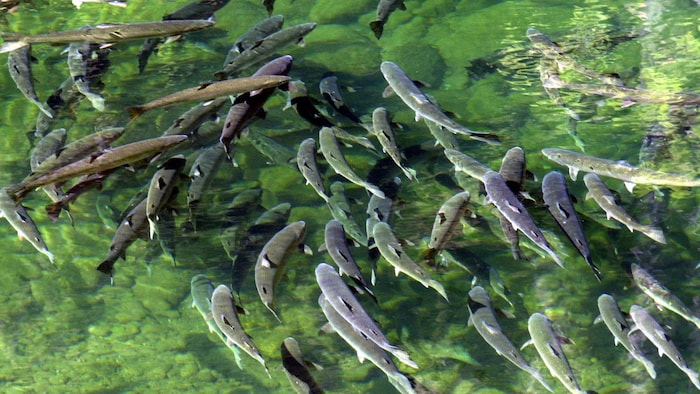Open in full screen mode The Bonn Convention secretariat has published a first-ever global report on migratory species. (Archive photo) Speech synthesis, based on artificial intelligence, makes it possible to generate spoken text from written text. Destruction of their natural habitat, population decline: There are many pressures on migratory species around the world. This is what emerges from a very first global report on the subject, unveiled Monday morning. The report's story is one of decline, says Kelly Malsch, lead author of the text, produced by the secretariat of the Convention on the Conservation of Migratory Species of Wild Animals – also known as the Bonn Convention. The international agreement was signed in 1979 and is the first time ever that a report has assessed the species protected by the Convention, which covers just over 1,200 species. Canada never ratified the treaty. Unsurprisingly, the picture is quite bleak: 44% of species protected by the Convention have seen their populations decline, and 90% of fish have also experienced a decline. Some species are approaching the tipping point, notes Kelly Malsch. She says she is particularly concerned about the decline observed in fish species, affected by overfishing and bycatch. The two biggest threats to migratory species are habitat destruction and overexploitation, according to the report's findings. Three out of four species protected by the Convention are threatened by the loss of their natural habitat, explains the lead author of the report. And to these pressures are also added climate change and various types of pollution. The report also identifies 400 additional species that should be protected under the Bonn Convention but are not currently, including fish and birds. The report's conclusions do not surprise James Snider of the World Wide Fund for Nature. We see the same trends with biodiversity, he notes. And perhaps that's what's most concerning: We acknowledge this problem, but the trends continue. These are spectacular species, which can travel very long distances, he recalls. James Snider notes that one of the difficulties with migratory species is that the animals often cross several countries, and so they need international collaboration to preserve their natural habitats, sometimes at home. x27;scale of a continent. Despite everything, the report offers some hope. Species decline is not inevitable, argues Kelly Malsch. Conversation of the habitats of migratory species and the rebound of populations is possible, she adds. A dozen species have seen their populations rebound after conservation efforts. Loading ELSE ON NEWS: New legal action against Northvolt and the government For example, one of the possible solutions: achieving the objectives set by COP15 on biodiversity in Montreal in 2022 could make it possible to maintain the habitat of several migratory animals. Other measures would also make it possible to reduce noise pollution in the oceans or even light pollution.
New legal action against Northvolt and the government
Migratory species under pressure

